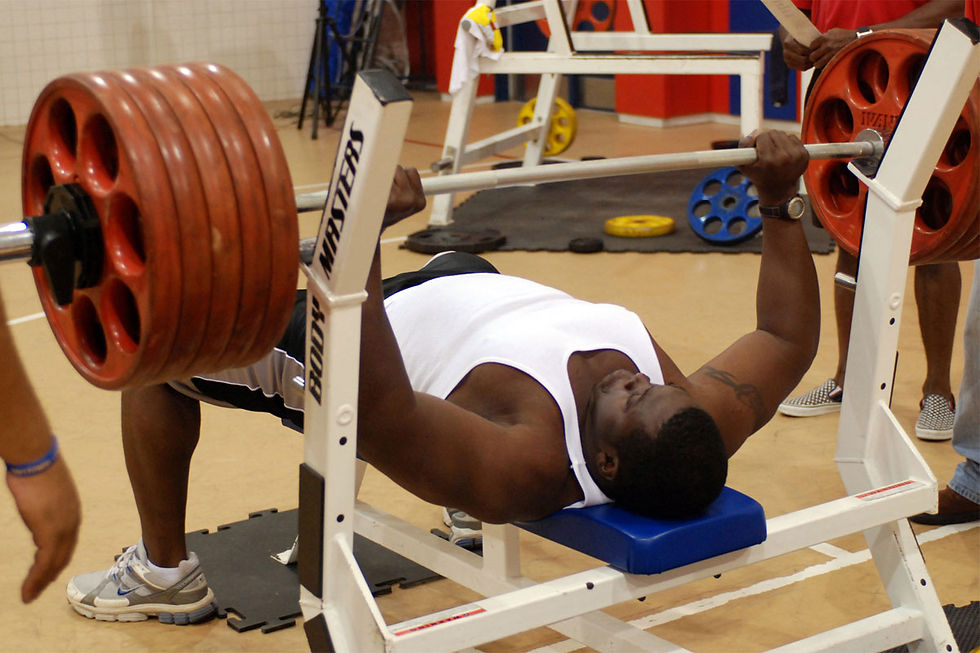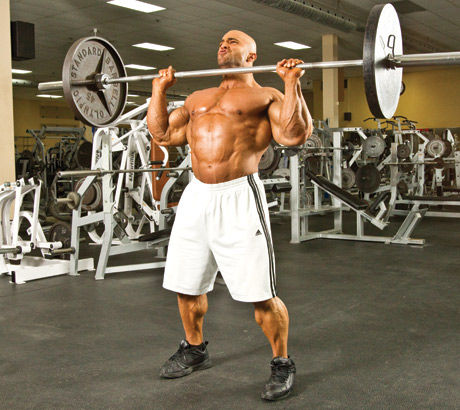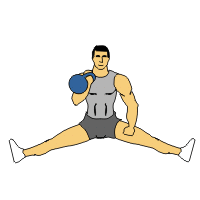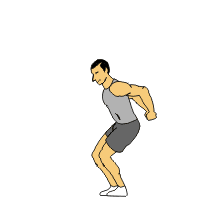Bench Press v. Standing Military Press
- Roberto Parker

- Jul 22, 2018
- 4 min read
During my 19 year tenure as a Collegiate and NFL Strength and Conditioning Coach I had many a spirited discussion regarding the efficacy of certain core lifts, particularly the Barbell Bench Press. There is no question that the bench press exercise can and will build massive strength of the shoulders, pectorals, and tricep areas, however, is it the best bang for your buck? Coaches often have a high volume of athletes to train in a very limited time frame, therefore it would be advantageous to incorporate strength exercises and drills that are the most functional and sports specific relative to improving your competitive edge. Often times an exercise such as Standing Barbell Press( SBP) is relegated to a secondary exercise or sometimes not even included within the training program. Unbeknownst to many coaches, they do not understand that the SBP is a powerhouse of lift that can elevate their athlete’s game to the next 2 levels!
Lets compare Bench Press and SBP.
Bench Press Pro’s:

1. Isolates, tones, and strengthens the upper torso areas of the pectorals, triceps, and anterior deltoid.
2. Simple exercise to execute
Bench Press Con’s:
1. Can you a name a sport where it is advantageous for you to be your backside? Very non-specific movement pattern compared to most sports.
2. The bench stabilizes the body during the execution of movement which also provides leverage during the movement, thus minimizing the involvement of major muscles such as the abdominal group, erectors of the back, scapular thoracic muscles, gluteal muscles, and hamstring/quadriceps areas of the leg.
3. Bench pressing with the descent of the bar onto the chest can place a negative stress load on the gleno-humeral joint of the shoulder. With the hands of the athlete being locked onto a straight bar during the descent, this inhibits the wrist and hands to rotate and places a tremendous load on the gleno-humeral joint which often leads to rotator cuff issues.
4. The 2 shoulder blades that rest on middle of the back are called scapula’s. There are 18 muscles that attach to each scapula. The scapula’s glide along the thoracic spinal area. When the scapula blades are freely moving this creates a very healthy environment for the entire thoracic spine. Lying flat on a bench while pressing a bar above the chest tends to limit those 18 muscles that attach to the scapula which creates a less than healthy environment.
Standing Bar Press Pro’s:

1. During the SBP you are standing on both feet, the bar is extended above and in front of the head until the arms are in a locked out position. Because you are on your feet during the execution of the press, there are ground forces being created throughout the body very similar to running, jumping, tackling, throwing, and a host of other athletic endeavors.
2. SBP intensely activates multiple several muscle groups such as the abdominal wall, erector posterior chain group, scapular thoracic area, gluteals, hamstring/quads, deltoids, clavicular pectorals, and triceps.
3. Because there are multiple muscle groups being engaged during the SBP the scapular blades are freely gliding which significantly reduces the stress load on the gleno-humeral shoulder joint.
4. Because you are in a standing position during the SBP it trains balance and stability strength which is often lacking with many young athletes.
5. SBP is also a simple exercise to learn.
SBP Con’s
1. If you have a predisposition to low back, wrist joint, shoulder joint, or elbow joint issues the SMP must be modified or substituted with another exercise.
Summary
We are “brains with bodies” not bodies with brains. According to studies the brain has preferential recruitment of muscle in clusters and groups as opposed to singular isolative movement patterns which lends itself to building robotic stiff movements as opposed to mobile athletic movements.
The SBP is a more athletic lift that integrates practically every major muscle of the body. Conversely, the bench press is an isolative lift recruits only a handful of muscles.
As a strength coach for several years and currently Head Trainer of Innovative Sports Training, I have witnessed this first hand many of the athletes who came from college or high school programs where bench press was a major emphasis, many of these athletes very strong on bench but often lacked mobility and functional core strength. For injury prevention and improving basic athleticism, core/functional strength must be the foundation of any physical training program.
If you took 2 athletes of equal talent and trained athlete “A” on bench press (core lift) for 1 year vs. athlete “B” on SBP(core lift) for 1 year, which athlete do you think would improve his/her athleticism? I realize there are other lifts in a strength program( power cleans, squats, deadlifts, push press, etc…..) that can make difference, however, right now we are focused on bench press vs. standing bar press relative to improving athleticism. I would put my money on athlete “B” hands down!
Comments:
As you have probably ascertained I am very pro SBP over the bench press. As coaches our purpose must be to develop athletes not build competitive power lifters or weight lifters. If an athlete cannot bend, twist, squat, lunge, pull, push their own body weight with maximum efficiency, they have no business performing heavy lifts (that includes SBP).
My recommendation is start with body weight drills along with light dumbbells, barbells, and medicine balls.
I heard a coach say many years ago “don’t leave your game in the weight room”. Build strength from the belly button out. Including Standing Barbell Press is big step in the right direction!
Roberto Parker is the Head Trainer and President of Innovative Sports Training that works with athletes of all ages and levels in the areas of speed, strength, nutrition, and education.
Websites:
· Istworkshops.webs.com
· Metabolicprimal.webs.com
· Fastandfurious.webs.com
Phone: 816-405-7703






Comments